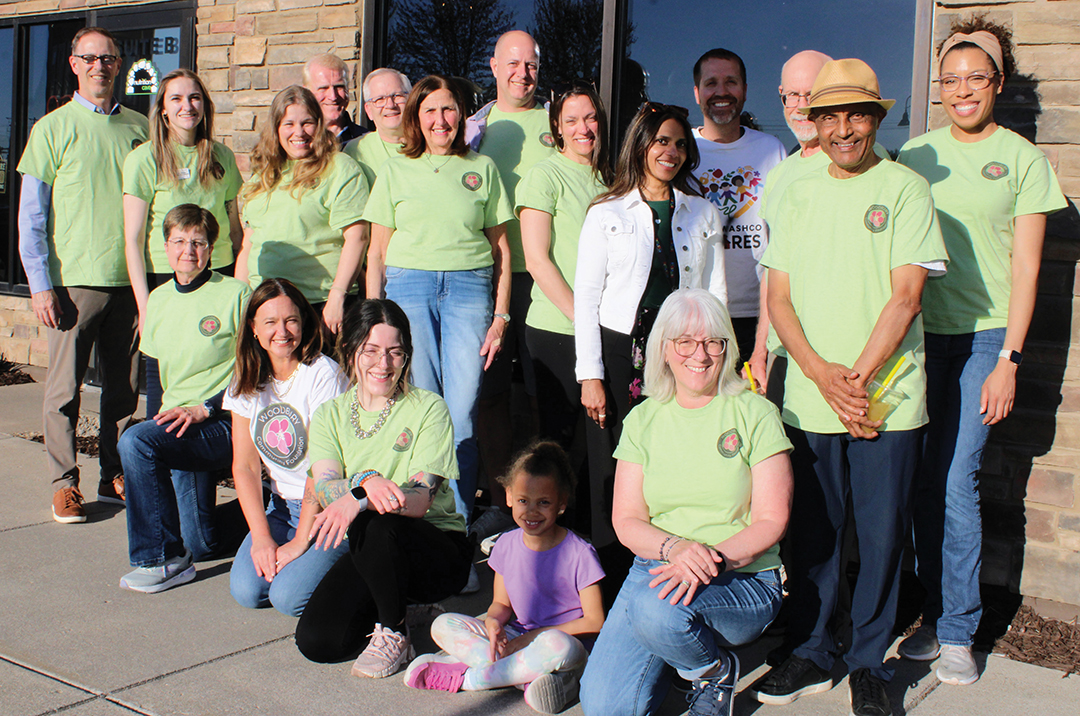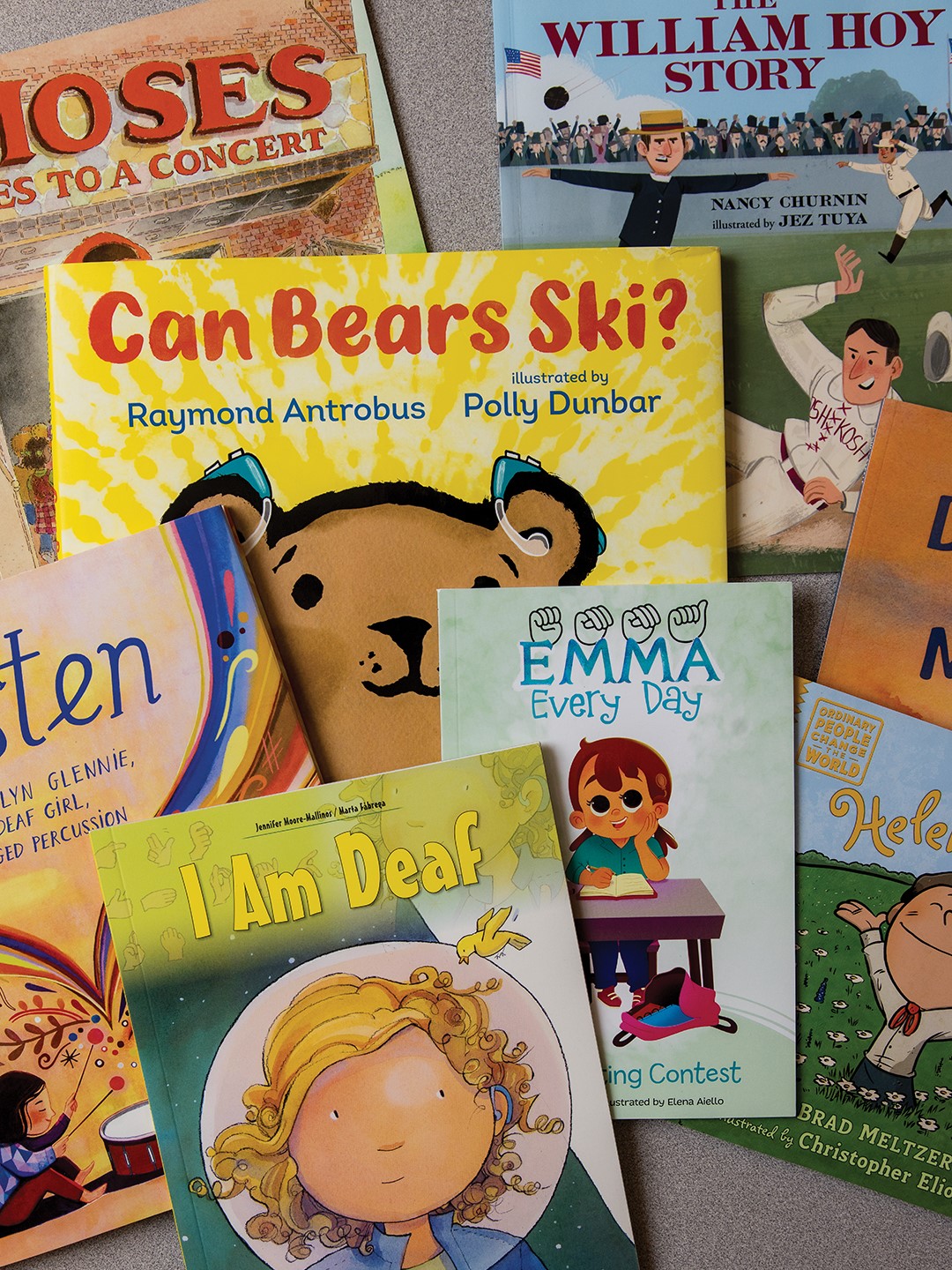
A few of the books that students in Kristin Kohner’s American Sign Language (ASL) class are translating from English to ASL. Photos: Chris Emeott
Woodbury High School students have translated more than 50 children’s books from English to American Sign Language.
When a Woodbury High School (WHS) teacher came across inspiration for an American Sign Language (ASL) inclusion project online—One Sign at a Time—she decided to implement it at South Washington County Schools (SoWashCo). Now, more than two years later, Kristin Kohner and WHS students have led the effort to translate over 50 children’s books from English to ASL in a project she says is rewarding on so many levels.
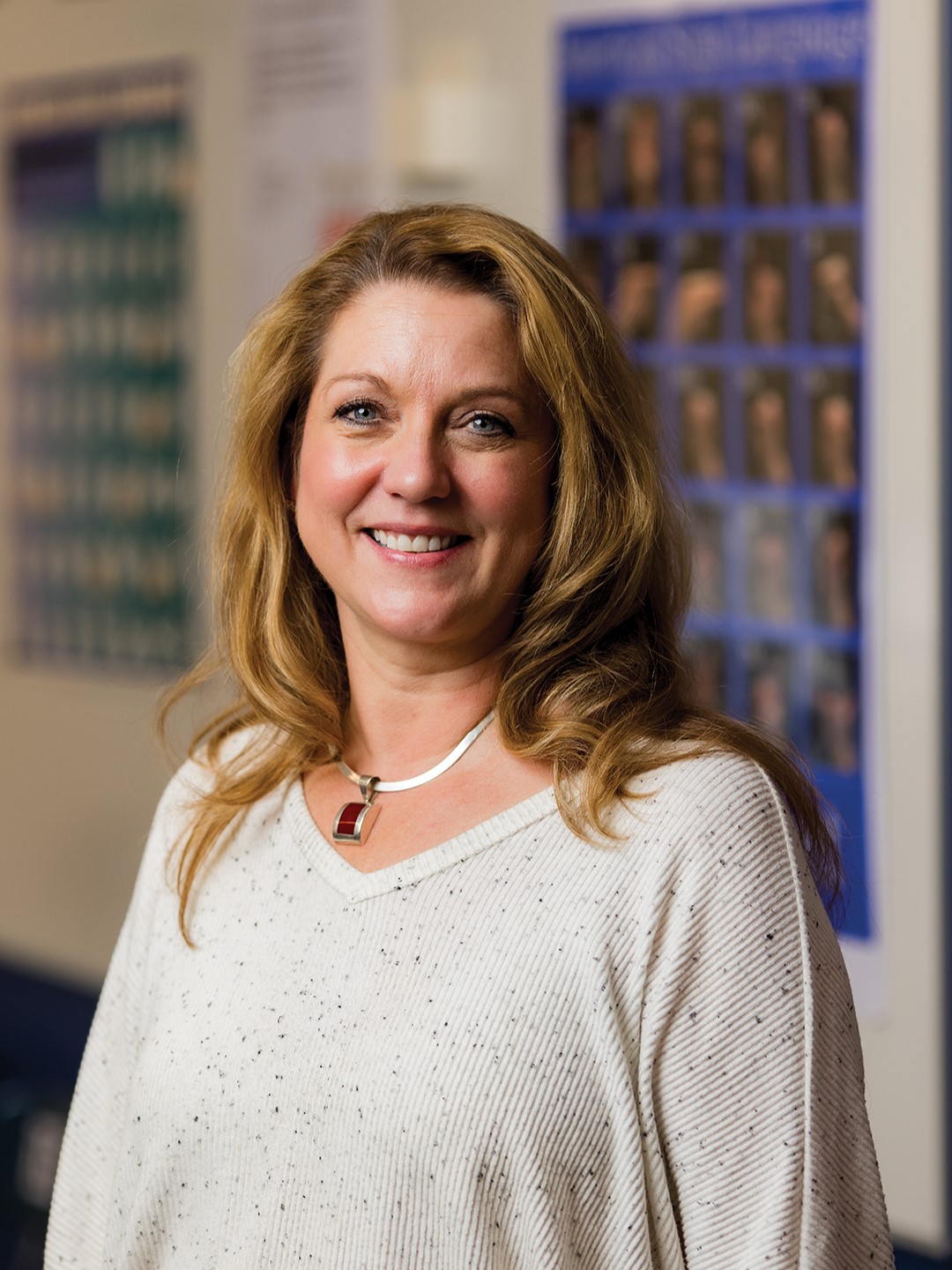
Kristin Kohner
The project translates children’s books from English to ASL using QR codes inserted into the books, which are scanned to view a video translation. The value, Kohner says, is having an “understanding of another culture, Deaf culture, ASL, hearing loss, inclusion and literacy.”
Kohner shares more about the project and the value it brings to everyone involved. She says no matter what role was played in the effort, it has delivered joy across the board.
How did the idea for translating books take shape?
Kristin Kohner (KK): My principal, Sarah Sorenson-Wagner, and I were former teachers of the deaf and hard of hearing (TDHH) together in this district, and she is fluent in ASL. While we were TDHH, we worked with general education classes, promoting inclusion. We always found that this not only helped the student with hearing loss, but students and staff as well. This process helped inclusion to be so much more seamless. In 2023, I proposed the book project idea to [Sorenson-Wagner], and she ordered the books for our school.
Explain the process.
KK: Using the books we purchased for this project, students were able to select a book of their choice and began to translate from English to ASL. It is important to note that ASL and English are separate languages. They met with me one-on-one to review their work and ask questions. After several weeks of translating, practicing, working with partners and with me for feedback, they filmed themselves signing the book. When finished, they voice recorded themselves reading the book. This helps to ensure inclusion for all students who are hearing, hard of hearing and deaf. At the end of the book, students are required to teach 10 signs that related to their book. This helps students understand that ASL and English are separate languages. An English word doesn’t always equate to one sign. For example, the English word run can be translated to ASL in more than 20 different signs, depending on the context and meaning.
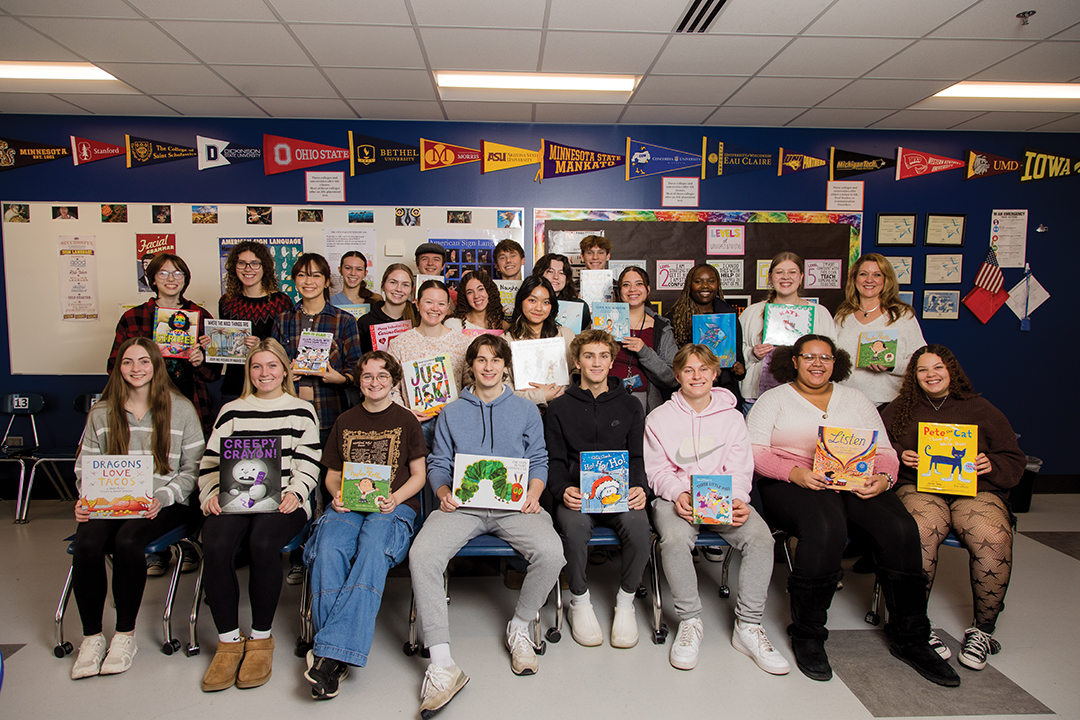
Kristin Kohner’s ASL class with books they are working on translating.
How does the QR code work?
KK: Upon completion of their video, students created QR codes to place on the outside of their books. When an elementary student checks out one of these books, they use a device to scan the QR code to view the video.
Are there certain kinds of books that are translated?
KK: Over the past two years, dedicated 12th-grade ASL students have translated over 50 books focusing on Deaf culture, hearing loss, deaf-blindness and ASL.
Have there been challenges to overcome?
KK: With any project, we are learning how to do things more efficiently. For example, in the first year, I had them record themselves reading the book first. We realized that this should be done at the end. Students are translating from English to ASL, and there may be a lag time because of this. We want to try to ensure that the signing and voice recordings match as closely as possible.
What has the reaction been?
KK: It’s been amazing. The ASL students love the project, and elementary students love it, too. Our district parents have been very supportive in donating books. Our district administrators have been very supportive as well. ASL students visit elementary schools to talk about the project, show a video and promote the books. We try to coordinate this with classes that have a student who is deaf, hard of hearing or deaf-blind. We have received such positive feedback.
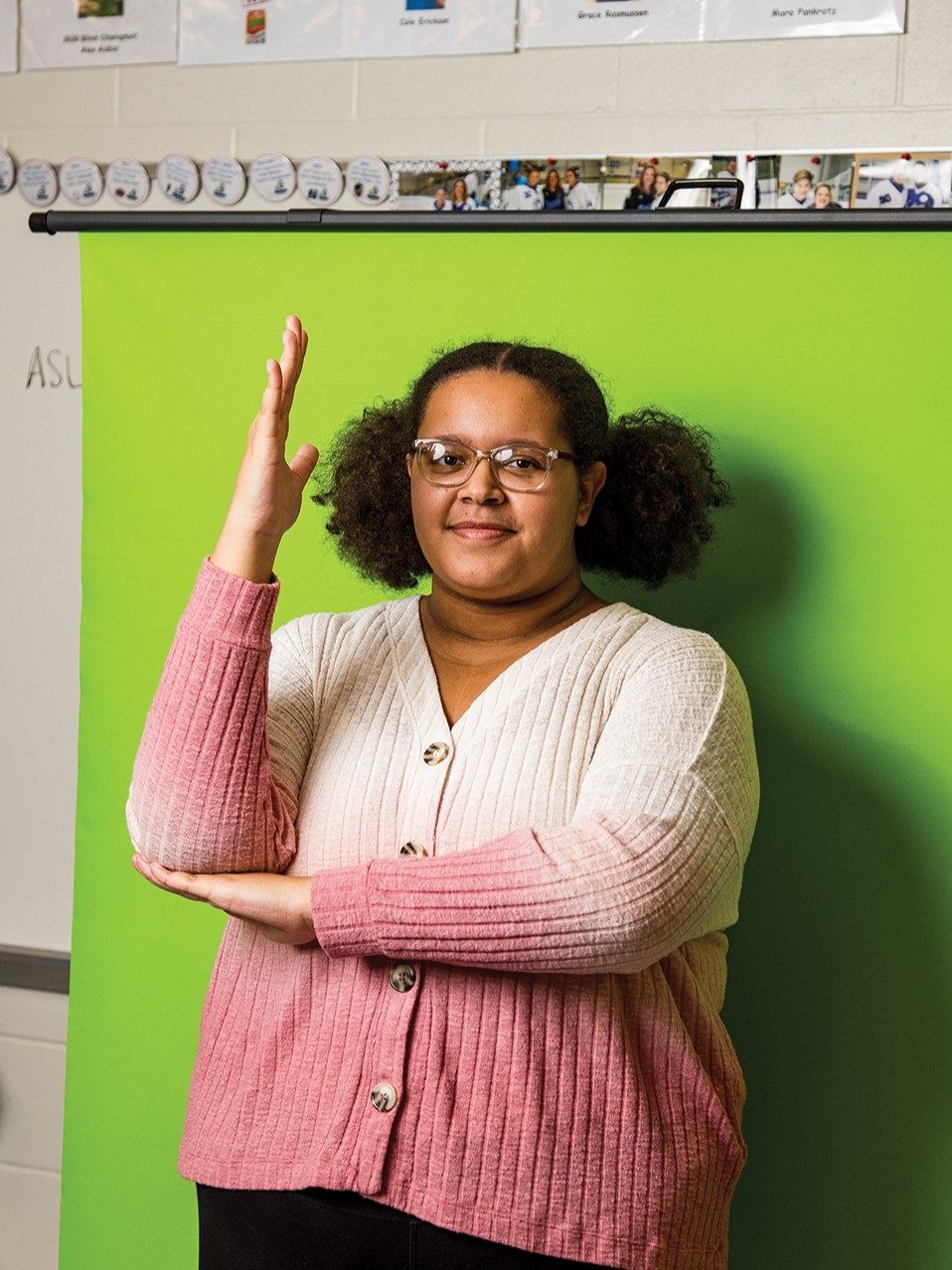
Adriyana Lolar signs the word “tree” in front of a green screen in which students use while recording their translation videos.
Looking Toward the Future
Kohner has big goals for the future of this project. She says, “I would like to get Deaf community volunteers to help with translation as this is a big project and challenging to meet one-on-one with students to help with translation.” For those unfamiliar with ASL, Kohner says there are events around the Twin Cities to learn more about Deaf culture and community. “Deaf people can do anything hearing people can do except hear,” she says. “Learning ASL leads to learning another language, learning about Deaf culture and becoming less sign language impaired.”
She adds that they have received a grant from SoWashCo, which will go toward materials, and additional funds from donors to go toward translate books and materials. She says, “It’s been an amazing partnership with SoWashCo students, teachers, parents, administrators and the community.”
Learn more about One Sign at a Time by visiting sowashco.org.







